Tank number 846 entered the Independence Palace at noon on April 30, 1975. Photo: Tran Mai Huong.
Not far from Tam Chuc Pagoda, Mr. Tran Binh Yen's custard apple and rau sang forest lies quietly at the foot of the gray limestone mountains, the dense trees make the landscape more desolate and very few people pass by. For the past few years, every day, only Mr. Yen works in the garden "for fun" - as he said, then he cooks by himself, goes to bed early at night, surfs the internet, recalls memories of the war with his old comrades. And in the days approaching April, they are even more nostalgic about the journey to Saigon in the spring of 1975.
Mini museum at the foot of the limestone mountain of Vung Chuoi
Although it was not the first tank to blow open the iron gate of the Independence Palace on that heroic afternoon 50 years ago, the T54B (numbered 846) driven by Private Tran Binh Yen, went down in history with the famous photo by journalist Tran Mai Huong, former war correspondent, former General Director of Vietnam News Agency, titled: "Liberation Army tanks entering the Independence Palace at noon on April 30, 1975". This photo was printed in many history books and textbooks and is one of the symbols of the cause of national reunification.
Veteran Tran Binh Yen (left cover) talks and recalls the historic moment 50 years ago at the Independence Palace.
The leading tanks entering the Independence Palace at that time were tank 843, led by Bui Quang Than, which crashed into the side gate and got stuck outside the Palace gate; the second tank 390, led by Vu Dang Toan, crashed into the Palace gate and was the first to enter. The events of tanks 843 and 390 entering the Independence Palace have long been determined. According to the memory of Tran Binh Yen and some of his comrades, the first two tanks were followed by a number of other tanks, including tank 917, amphibious tank number 746, and T54B number 846, led by Nguyen Quang Hoa and driven by Tran Binh Yen; in the tank were gunner number 2 Nguyen Ba Tu (the man protruding from the turret), gunner number 1 Nguyen Ngoc Quy (sitting in the tank), and a number of infantrymen. The photo of T54B tank number 846 was taken by journalist Tran Mai Huong at the exact moment it passed through the Palace gate that had just been destroyed by tank 390, and became one of the symbols of April 30, 1975.
Exactly 50 years after that historic moment, the tank soldier, private Tran Binh Yen, is now a true farmer in Vung Chuoi (Ba Sao town, Kim Bang district, Ha Nam province). “The limestone mountain range has no name, but this area has long had a lot of bananas growing, so it was called Vung Chuoi. Soldiers and guerrillas during the anti-French period often hid in the mountains, eating bananas instead of rice to fight the enemy…”, Mr. Yen once told me. I remember one evening in mid-March 2025, I called Mr. Yen on messenger, the phone rang but no one answered; I called Zalo again and Mr. Yen said: “I’m sleeping!”. “You went to bed so early, it’s only 8pm?”. Mr. Yen laughed, the innocent and carefree laughter of an old man in his seventies: “Yes, I am all alone, there is no one in the neighborhood, if I don’t go to bed early at night, what will I do?”… After a few greetings, I made an appointment with Mr. Yen: “This weekend, Tran Mai Huong and I want to visit you; are you home?” Hearing that, Mr. Yen seemed to wake up from his sleepiness and excitedly said: “Oh really? Just let me know in advance that I am home. I’ll be very happy if you come over. See you soon.”
Journalist Tran Mai Huong (right cover), author of the historic photo "Tank number 846 entering the Independence Palace at noon on April 30, 1975".
As scheduled, at the end of the week, a group of CAND Newspaper members, including Colonel Dang Van Lan (former Deputy Editor-in-Chief) and journalist Tran Mai Huong, went to Ha Nam to visit veteran Tran Binh Yen. Along the way, we talked about the lives and work of journalist Tran Mai Huong and his colleagues throughout the journey following the speeding troops in the historic Spring 50 years ago...
Although we had been to Mr. Yen's house several times, this time, we had the support of our colleagues from the Ha Nam Provincial Police and the Ba Sao Town Police, so we didn't have to ask for directions. We arrived at Vung Chuoi at around 9:30. We walked through the custard apple forest and rows of rau sang to a small, deserted house at the foot of the mountain, with no one in sight, except for a woman who introduced herself as Duyen, the Party Secretary of Group 7, Ba Sao Ward. "Mr. Yen went to take care of his wife for a while and then came back. He asked me to come and welcome the guests first," Duyen said and invited the guests into the house.
Veteran Tran Binh Yen introduces historical images in his family's mini museum.
As soon as we sat down, Mr. Yen rode his motorbike home, welcoming guests with his usual warm smile and a generous, humble tone; with most people, Mr. Yen called us “uncle” and addressed himself as “younger brother”, even though we were about 20 years younger than Mr. Yen. “Hello everyone… For the past few years, my wife has been sick and bedridden, and had to be taken to my eldest son’s house a few kilometers away for convenient treatment and care; every day I take the time to go up there to take care of her, feed her…”. “My wife” is Mrs. Van, the wife who became married to Mr. Yen in 1982 after a beautiful love story that a few years ago, CAND Newspaper had an article reflecting: “The red thread from a photo published in the newspaper” .
While Mr. Yen was making tea, we carefully looked at dozens of large and small photos hanging solemnly in the living room of the house. This is a photo of the historic tank 846, one of which was enlarged to cover the entire wall; then there were photos of tanks 843, 390, 917, and amphibious tank 746... These photos were taken by international and Vietnamese journalists, including Mr. Tran Mai Huong, at noon on April 30, 1975. One clearly showed that there were not many tanks in the Palace yet. There were many photos of Mr. Yen and his comrades meeting each other in the years of peace that followed, making the room, though old, as lively as a mini museum at the foot of the limestone mountains of Vung Chuoi.
The lasting memories of a veteran - police officer
Gathering around a pot of hot tea and a plate of sapodilla spread out in his garden, Mr. Yen reminisced about the years he joined the army, became a tank soldier and traveled south on a T54B tank with the serial number 846.
Mr. Yen learned to drive tanks from 1972-1973, at the Armored Non-Commissioned Officer School, now called School 700. At first, he learned to drive the Soviet T-34 tank for a year; while studying, he also worked in production, cutting wood, planting rice, building barracks... After mastering the T-34, he learned to drive the T-59 and T-54 tanks. The tank Mr. Yen drove when entering the Independence Palace was a T-54B.
Author and veteran Tran Binh Yen, who drove tank 846 into the Independence Palace at noon on April 30, 1975.
In early 1975, Mr. Yen's company joined the campaign, departing from Quang Tri with 9 tanks. Right before the Ho Chi Minh Campaign, tank 386 of company commander Bui Quang Than was broken down and was replaced by tank 843, which was the first tank to crash into the side gate and get stuck outside the Independence Palace. Mr. Yen absentmindedly recalled: "My company had 2 tanks burned by the enemy at Nuoc Trong bridge, but at the Hang Xanh intersection, none were burned. Our tanks burned at Lang Cha Ca belonged to another unit."
While listening and initiating stories for Mr. Yen to tell, journalist Tran Mai Huong joined in: “Our group of reporters met the 304th Division on April 24, 1975, then went into the Ong Que rubber forest. We stayed at the Corps Command near the Nuoc Trong shooting range. Two days later, when the campaign began, we followed the direction of the advance towards Saigon”… It was Mr. Yen’s turn to speak: “On April 28, 1975, when our 203rd Tank Brigade entered the Nuoc Trong base, the enemy fired fiercely at the formation. Le Duy Ung’s vehicle was pierced by a bullet through the gun barrel, Ung was seriously injured and blinded in both eyes. Le Duy Ung and Bui Quang Than were later awarded the title of Hero”… Journalist Tran Mai Huong continued Mr. Yen: “Later, I was one of the first people to write about Le Duy Ung being injured and losing both eyes and the story of him drawing an image of Uncle Ho on a piece of cloth with blood from his eyes. When I talked to Professor Nguyen Trong Nhan, Director of the Eye Institute, and Mr. Nhan agreed to operate on Mr. Ung, and after that Mr. Ung was able to see again. Later, Mr. Ung married a saleswoman on Nguyen Cong Tru Street, Hanoi.
The story continues with the still quite good memory of veteran Tran Binh Yen: “When we marched closer to Saigon, there were some infantrymen from Regiment 9 following us, sitting around the side of the tank. When we reached the gate of the Independence Palace, we saw some of our tanks in the yard, including tanks 390, 843, 746, 917… We entered after the leading tanks for about 15 minutes. Once we entered the Independence Palace, there was an order to deploy the formation to protect the target, ready to fight if the enemy counterattacked. My tank was on duty, guarding the left wing of the Independence Palace yard. Around 12-13 noon, a large crowd gathered, surrounding the Palace. Around 15-16 pm, while we were inside the Palace, we heard many explosions but did not know which area they came from, so the commanders ordered the tank soldiers to continue to get into combat-ready positions. At that time, the surrounding people also dispersed. Later, we heard that one of our units was still there. attach explosives to the Palace gate, ready to detonate if necessary; it turned out they had not received new orders even though they had captured the target. At around 4 p.m., General Nguyen Huu An directed my 846 tank to block the Palace gate, not allowing anyone else to enter. That evening, a number of tanks, including mine, and infantry from the corps were ordered to stay behind to protect the Independence Palace.
At night, we got off the bus, walked around the Palace, and then entered the area where the Saigon soldiers guarding the Palace were stationed. They also had bunk beds like our soldiers. Guns, clothes, and personal belongings were left lying around; my brothers and I picked up their guns and tried shooting them. They felt heavier and more jerky than the K54 guns”…
The kind smile of veteran Tran Binh Yen.
After 50 years, Mr. Yen still recalls the emotions of that historic moment: “After entering the Independence Palace, that afternoon, we all frantically searched for each other in the Palace to see who was still there and who was gone. Late in the afternoon, most of our troops withdrew from the Palace, leaving only a few tanks and infantry to protect the target. That evening, we went into the kitchen to find food and then brought it out to cook next to the vehicles. My brothers and I did not drink alcohol, we only drank soft drinks found in the kitchen storage.”
After entering the Independence Palace with his comrades, Mr. Yen continued to travel through the military, doing international missions in Cambodia, then being discharged, becoming a real farmer. It was not until 2015, on the occasion of the 40th anniversary of the country's reunification, that he was able to return to visit the Independence Palace. Mr. Yen proudly said: "My house was one of the first houses to install a landline phone in Ba Sao town. The main road to my house was very far, but I worked as an electrician, got to know the telecommunications brothers and asked them for help. Later, with the advent of mobile phones and the internet, I was able to find many old comrades."
Certificate of merit from Ha Nam Ninh Provincial Police awarded to police officer Tran Binh Yen (1988).
In 1982, the former Tran Binh Yen married a female worker at Ba Sao Farm and had three children together. Each child has a name associated with the battlefields where Mr. Yen had “near-death experiences”… With the qualities of Uncle Ho’s soldiers, Mr. Yen has always actively participated in local social work, worked as an electrician in the hamlet, deputy commune team leader and then a police officer in Ba Sao commune for many years. Mr. Yen recalled: “At that time, the Ba Sao Commune Police Department only had 4 people, including 3 local people and 1 person sent by the District Police. We took turns on duty, patrolled, and ensured security and safety for the people. At that time, this area was full of dense, dark forests, lacking food and electricity. Criminals colluded to steal everything from state property to people's poultry, and gambling... My fellow commune police officers and I made great efforts to patrol and arrest many cases, contributing to stabilizing the situation. I was voted as an emulation soldier many times, and was awarded many certificates of merit.”
Journalists and some officers of Ha Nam Police visited the mini museum of veteran Tran Binh Yen.
The conversation with veteran Tran Binh Yen suddenly reached noon. Saying goodbye to him, I recalled a meeting a few years ago, Mr. Yen confided very touchingly: “We are luckier than the brothers who remained on the battlefield. On our tank 846, the tank commander Hoa was wounded twice but did not receive the disabled soldier regime, because at that time no one thought of carefully keeping records to make the regime later. Hoa just passed away in the middle of the year. He joined the army while studying at university, after the peace, he became a tank and armored vehicle training instructor, his family circumstances were difficult, he asked to leave the army and did not receive any regime… Brothers Tu and Quy were both in poor health. A few years ago, the local authorities also suggested that I apply for the regime for Agent Orange victims, but I refused because I thought that since I was healthy and had a garden and fields like this, I should focus on making a living and save that regime for the other brothers.”
From Mr. Yen's house to Hanoi, I received some souvenir photos sent via Zalo, including a photo of the Certificate of Merit from the Ha Nam Ninh Provincial Police awarded to comrade Tran Binh Yen, Ba Sao Commune Police, Kim Bang District "Achieved the title of Emulation Soldier in 1988". Attached to the photos was a simple message from the veteran on the historic tank Tran Binh Yen: "That's all the assets a tank soldier has left after the battle"!
Source: https://cand.com.vn/Phong-su-tu-lieu/tu-nguoi-cuu-binh-chiec-xe-tang-noi-tieng-tro-thanh-cong-an-xa-i766440/


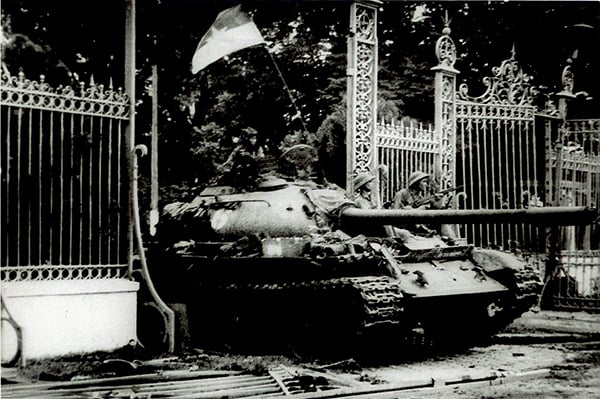
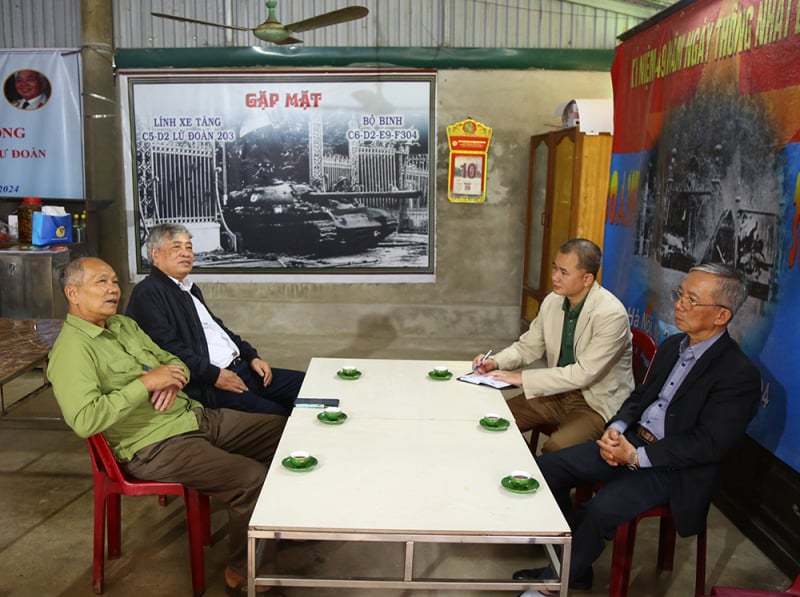
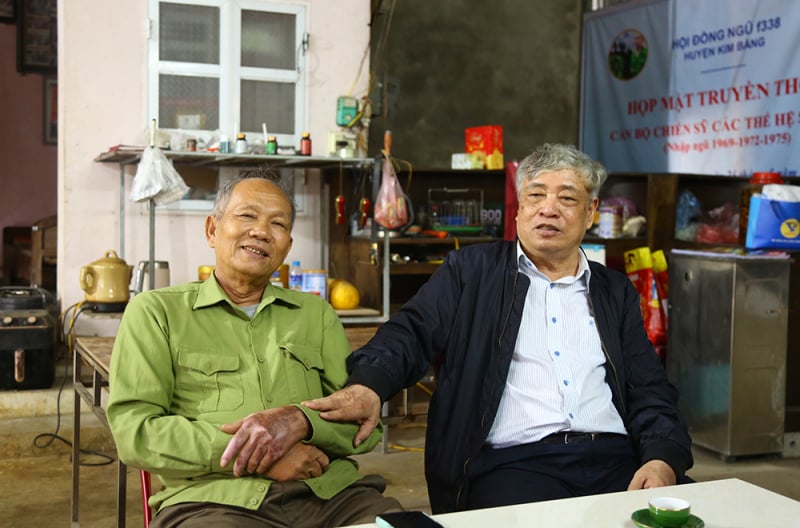
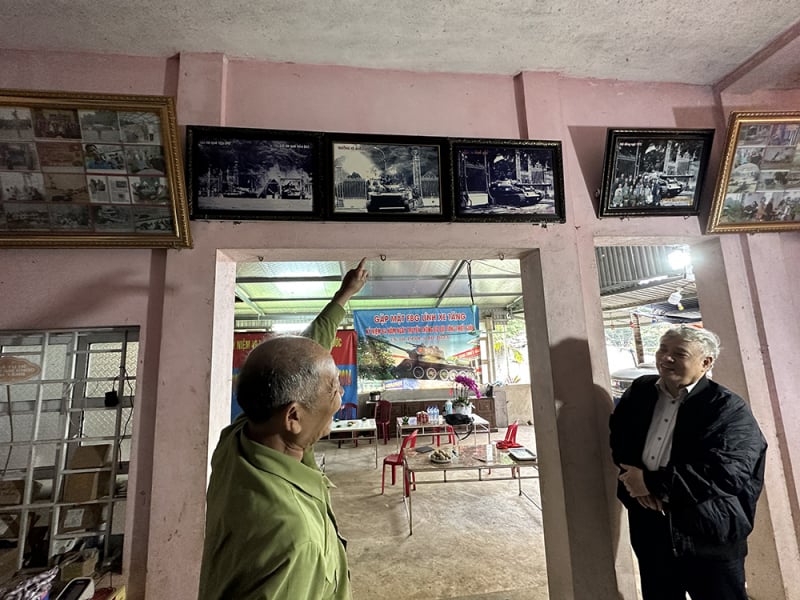
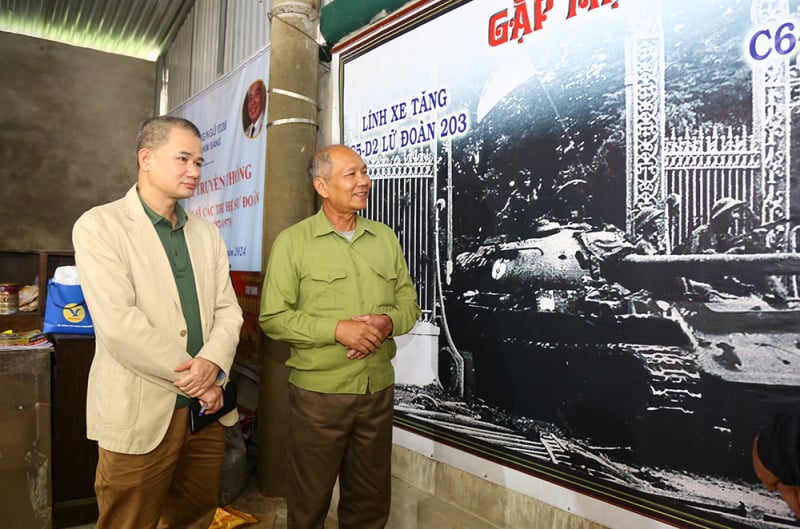
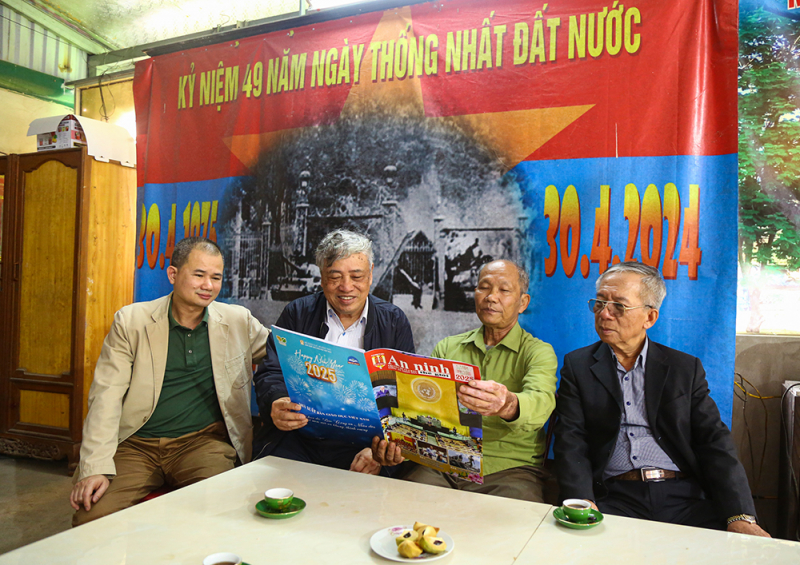
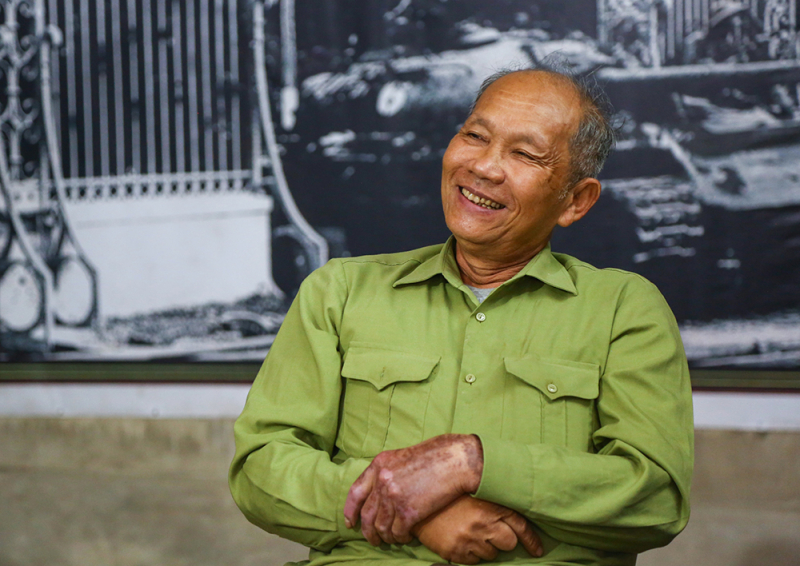
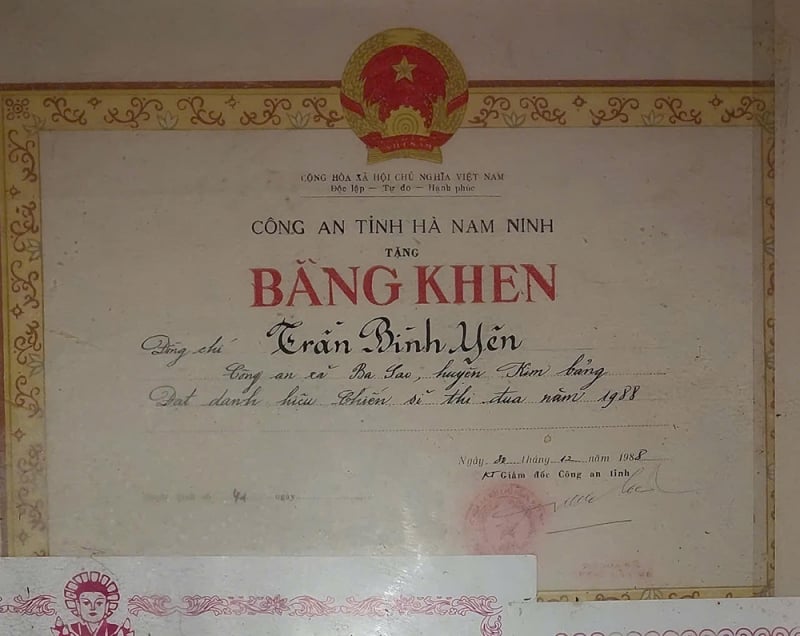
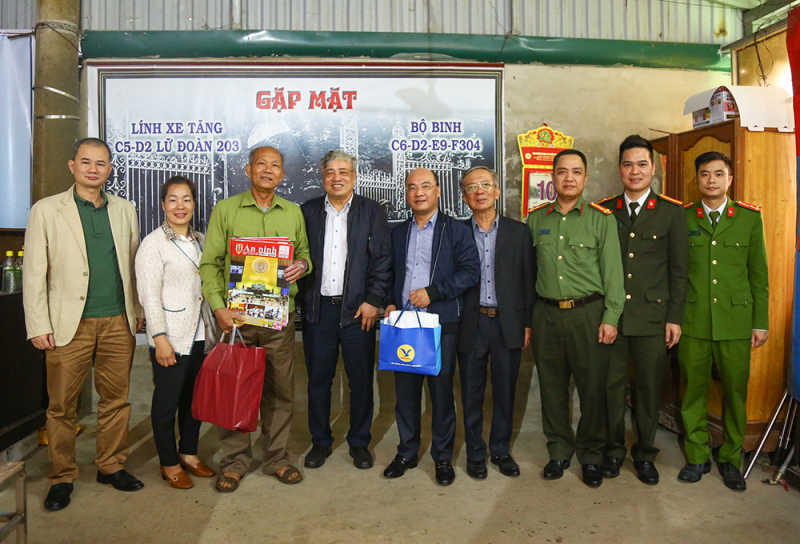

![[Photo] Prime Minister Pham Minh Chinh chairs meeting on draft Resolution of National Assembly on International Financial Center in Vietnam](https://vphoto.vietnam.vn/thumb/1200x675/vietnam/resource/IMAGE/2025/5/22/d398664ff1a140629169ea5a24e1b4d0)
![[Photo] General Secretary To Lam chairs a working session with the Central Internal Affairs Commission](https://vphoto.vietnam.vn/thumb/1200x675/vietnam/resource/IMAGE/2025/5/22/3b7790f499da45b2803d8ae253207ef1)

![[Photo] T&T 1 and Ho Chi Minh City 1 People's Police Teams won the men's and women's team championships](https://vphoto.vietnam.vn/thumb/1200x675/vietnam/resource/IMAGE/2025/5/22/39db06ae67cb4001b7a556e8d9a56d07)
![[Photo] Press delegation meeting to visit Truong Sa and DK1 Platform](https://vphoto.vietnam.vn/thumb/1200x675/vietnam/resource/IMAGE/2025/5/22/6b8d232877ec421a9e8187d83b9f8006)
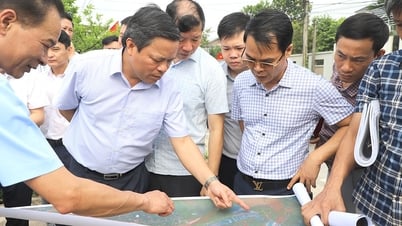

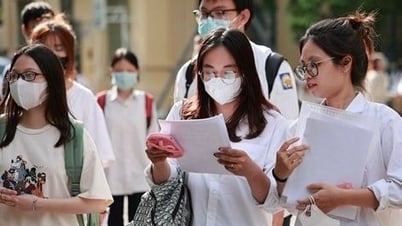
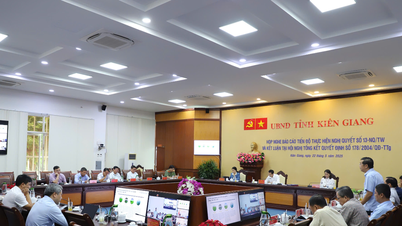
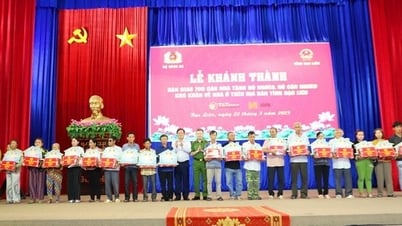
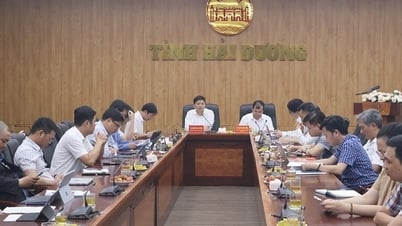
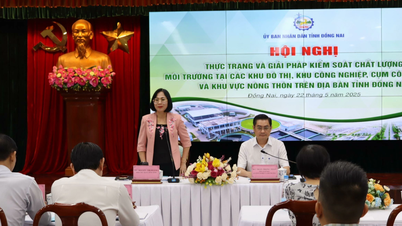




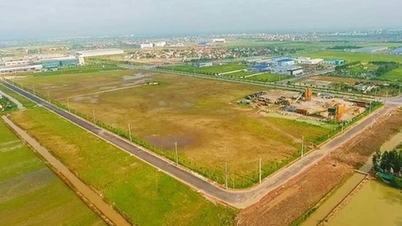
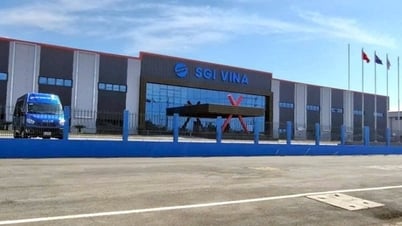
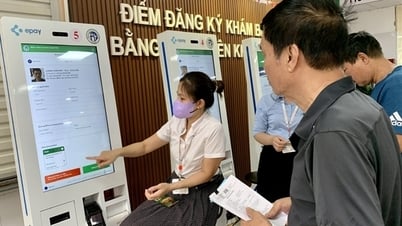
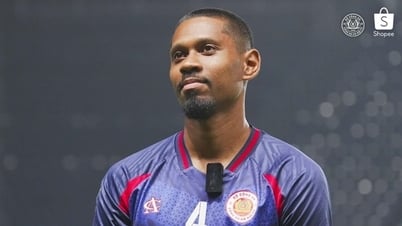
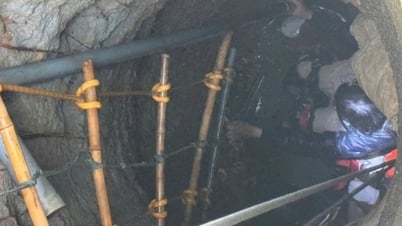
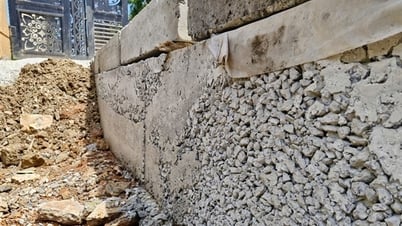





































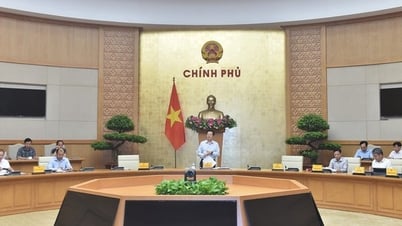

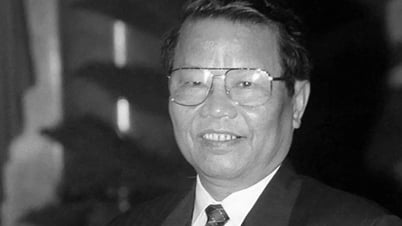




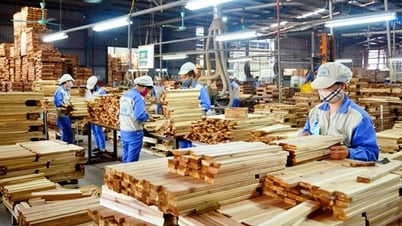


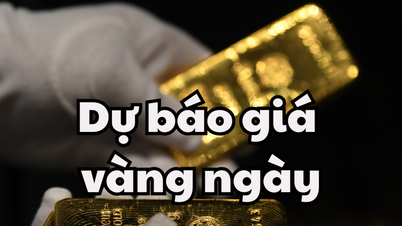

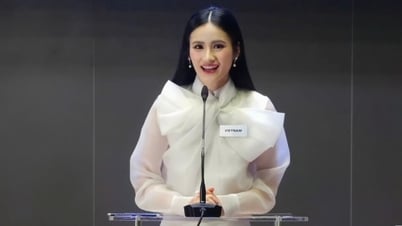

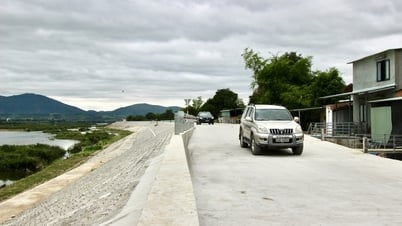







![[Podcast] Week introducing more than 500 OCOP products in Hanoi](https://vphoto.vietnam.vn/thumb/402x226/vietnam/resource/IMAGE/2025/5/22/d144aac2416744718388dbae3260e7fd)





Comment (0)